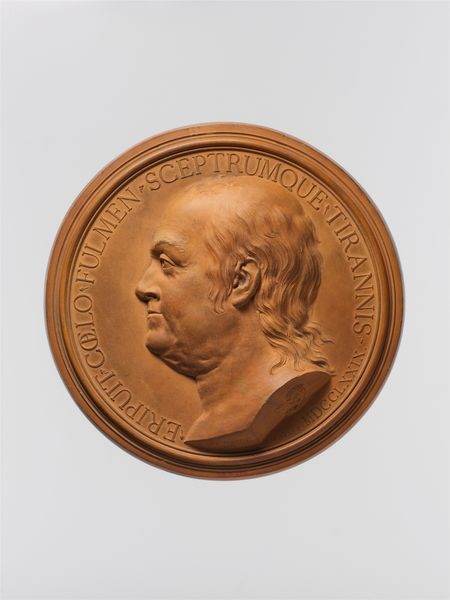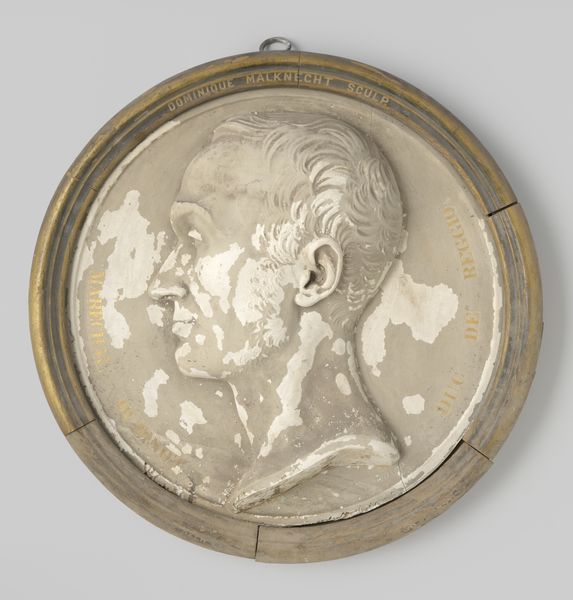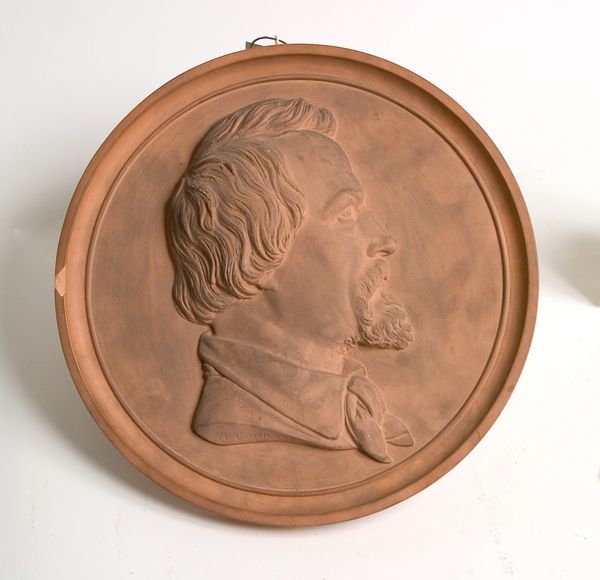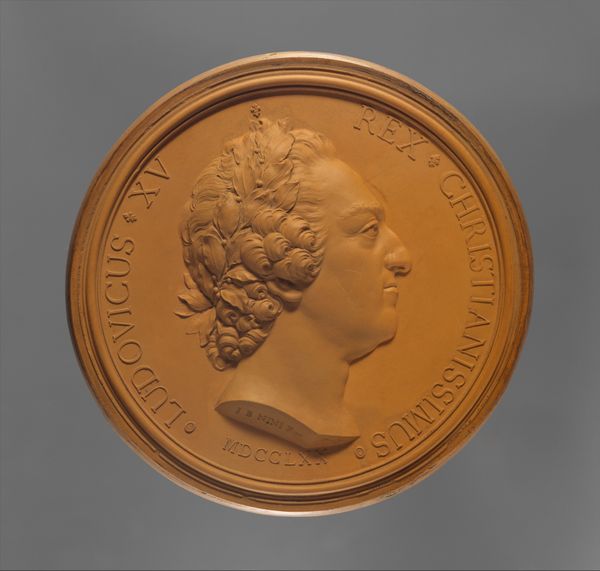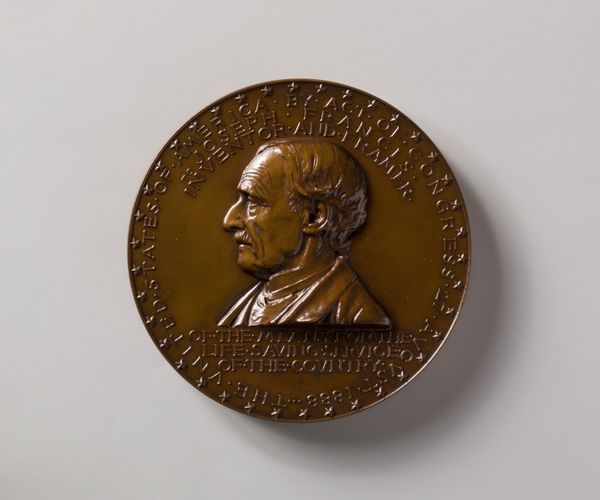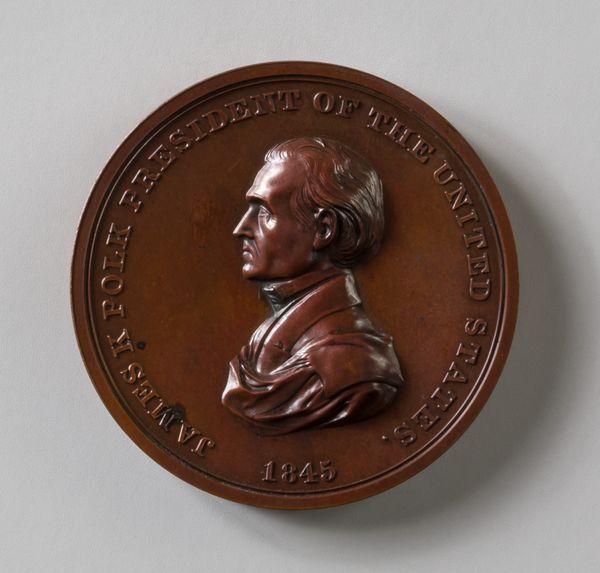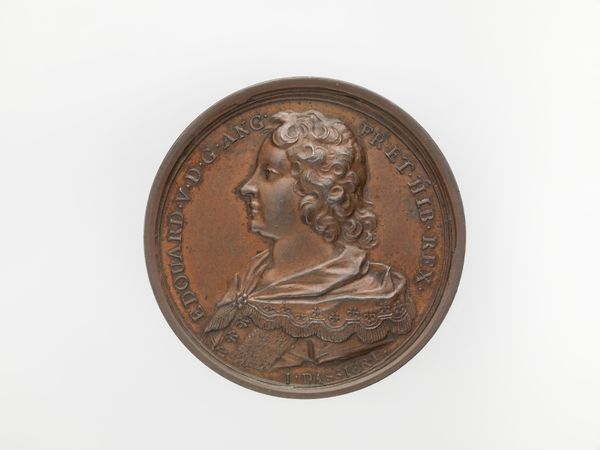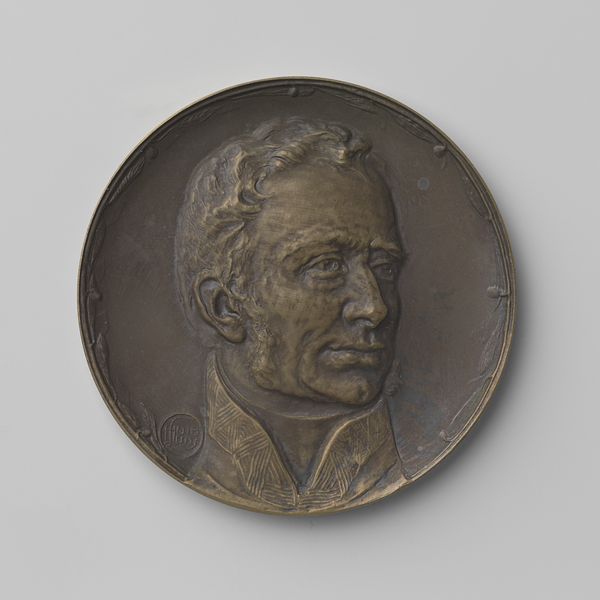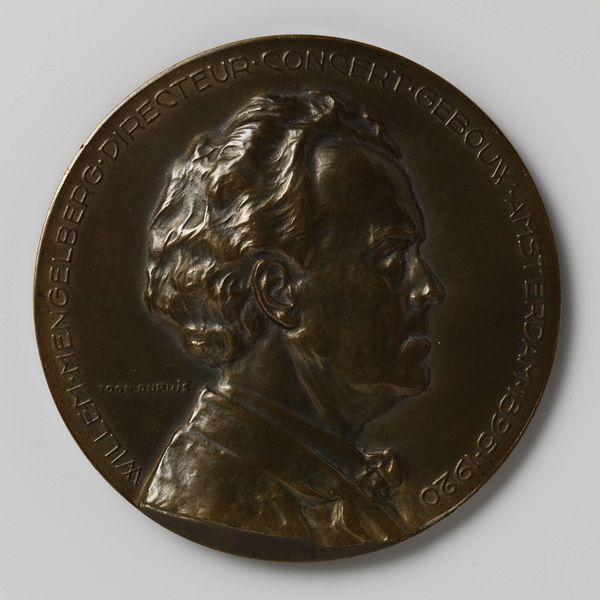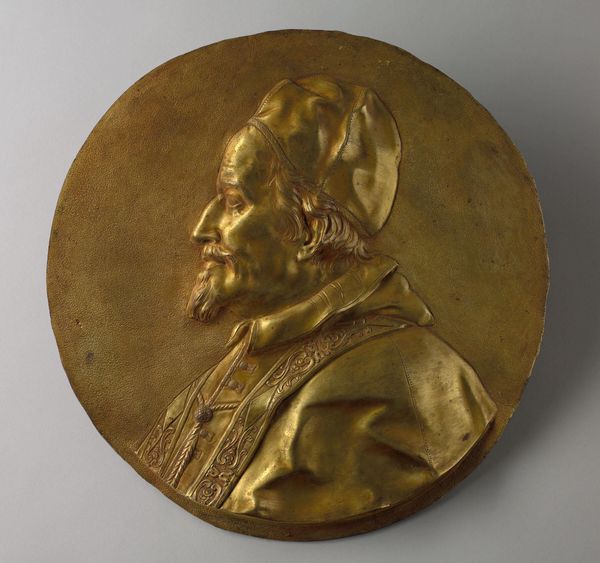
Dimensions: 63.5 cm (25 in.)
Copyright: Public Domain
Karl Theodore Bitter completed this plaster relief of Richard Morris Hunt in 1891. Hunt was among the most prominent architects in the United States during the second half of the 19th century, and this relief speaks volumes about the cultural institutions that shaped art and architecture at that time. The classical style, with its emphasis on balance and idealized form, reflects Hunt's own architectural preferences and the broader Beaux-Arts tradition that dominated American architecture during the Gilded Age. Hunt himself studied at the École des Beaux-Arts in Paris, and he played a key role in introducing this style to the United States. His famous works include the facade of the Metropolitan Museum of Art and many mansions of the Vanderbilt family in New York. The relief presents Hunt as a figure of authority and refinement, reinforcing the cultural values associated with elite institutions and the wealthy patrons who supported them. To learn more, one could consult architectural journals, biographies of Hunt, and studies of the École des Beaux-Arts and its influence on American architecture.
Comments
No comments
Be the first to comment and join the conversation on the ultimate creative platform.
